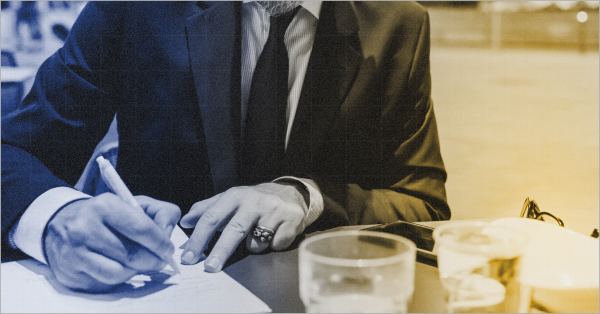In today’s hyperconnected world, a single comment, advertisement, or social media post can land your business in serious legal trouble. You might not even realise it, but your latest marketing campaign or public statement could be seen as defamatory, misleading, or even infringing on someone’s intellectual property.
Now imagine being sued for something as seemingly harmless as a social media meme or an aggressive tagline. Legal costs mount, reputational damage spreads, and before you know it, you are battling a lawsuit that drains your time, energy, and finances—especially in India’s increasingly vigilant consumer and IP rights landscape.
That’s where Personal and Advertising Injury Liability coverage under a Commercial General Liability (CGL) policy comes in. It acts as a legal and financial shield, protecting your business from non-physical but very real threats like defamation, copyright or trademark infringement, and false advertising claims. In this blog, we will break down exactly what this coverage includes, why it’s essential in India and how the right CGL Policy can keep your brand safe in an unpredictable world.
What is Commercial General Liability Insurance and Why Does it Matter?
To start, let’s define Commercial General Liability Insurance. This insurance provides comprehensive coverage against various third-party claims, such as bodily injury, property damage, and personal and advertising injury. A CGL Policy serves as a shield, defending businesses from lawsuits and claims that could otherwise lead to substantial financial losses.
CGL Insurance isn’t just a luxury—it’s a necessity. As businesses grow, so does their exposure to risk. Whether you’re a small business owner or managing a large corporation, your likelihood of facing a lawsuit increases as you engage with clients, customers, and even competitors. In India, where consumer protection laws are evolving rapidly, lawsuits related to advertising and reputational harm are gaining momentum.
What is Personal and Advertising Injury Liability?
Within a CGL policy, Personal and Advertising Injury Liability refers to coverage for non-physical injuries, such as reputational damage or violations of intellectual property rights, that your business may cause to a third party.
Personal Injury Liability includes:
- Defamation (Libel and Slander): Statements made by your business that damage someone’s reputation, whether online or offline.
- False Arrest or Imprisonment: Wrongfully detaining an individual, for instance, by security personnel in a retail store.
- Malicious Prosecution: Filing baseless or malicious legal action that results in harm to another party’s reputation or well-being.
Advertising Injury Liability includes:
- Copyright Infringement: Using copyrighted content—like music, images, or text—in your advertisements without proper permission.
- Trademark Infringement: Using another brand’s trademarked elements in your marketing campaigns, which may confuse consumers.
- Misleading or False Advertising: Making deceptive claims about your product or service quality, pricing, or features.
The Importance of Personal Injury Liability in a CGL Policy
Personal Injury Liability protects your business from legal claims arising when an individual’s rights are violated by your business’s actions or statements.
Common Claims Under Personal Injury Liability:
- Defamation (Libel and Slander): In India, defamation is both a civil and criminal offence. A social media post or public comment by your business could invite a lawsuit, even if unintentional.
- False Arrest or Imprisonment: Common in retail or hospitality environments where staff may detain individuals suspected of theft.
- Malicious Prosecution: If your business initiates litigation against a competitor or individual without solid grounds, it could lead to a counterclaim.
Why You Need Protection:
Without this coverage, your business would have to absorb legal costs, settlements, and potential damages—all of which can be financially draining. For startups and SMEs, this could mean the difference between survival and shutdown.
The Role of Advertising Injury Liability in a CGL Policy
Businesses today are marketing across multiple platforms—online ads, social media, print, and broadcast. With this comes legal exposure.
Common Advertising Injury Scenarios:
- Copyright Infringement: Using stock photos, jingles, or promotional videos without licensing them.
- Trademark Infringement: A startup using a brand name or logo resembling that of an established company can face serious consequences.
- Misleading Advertising: The Consumer Protection Act, 2019 in India empowers consumers to file complaints against businesses that engage in unfair trade practices or misrepresentation.
Why This Coverage is Essential:
Legal battles over ad content are expensive and complex. The advertising injury coverage in a CGL Policy helps by covering defence costs, damages, and settlements related to such claims.
How Personal and Advertising Injury Liability Coverage Can Protect Your Business
Here’s how this coverage helps:
- Defence Costs Coverage: Covers legal representation and court expenses if you are sued for defamation, IP violations, or misleading ads.
- Settlement Costs: Pays for out-of-court settlements if your legal team decides settling is the best option.
- Damages Coverage: If the court awards damages to a third party, your policy can pay them—up to the policy limit.
Common Exclusions in Personal and Advertising Injury Liability Coverage
It’s important to understand what CGL doesn’t cover:
- Intentional Harm: Deliberately harmful acts, such as knowingly spreading false information, are not covered.
- Breach of Contract: Damages arising purely from failure to meet contractual obligations are excluded.
- Certain Intellectual Property Claims: Infringement of patents and claims involving your own intellectual property (as opposed to third-party IP) may be excluded unless explicitly added via endorsement.
Customising Your CGL Policy for Better Protection
To enhance your coverage:
- Add Endorsements: Consider endorsements for digital liability, cyber defamation, or extended IP protection.
- Check Policy Limits: Ensure the per-incident and aggregate limits meet the legal cost expectations in your industry.
- Consult a Broker: An experienced insurance advisor can help customise your policy to your business model and risk profile.
Real-World Example: A Case from Mumbai
A food delivery startup in Mumbai ran a cheeky billboard campaign that compared its services with a competitor using humorous but suggestive wording. The rival company filed a defamation suit, citing reputational damage. The startup’s CGL Policy with advertising injury coverage helped settle the case and paid for legal defence, saving the startup from severe financial strain.
The Bottomline
In today’s fast-paced business world, the risks associated with personal and advertising injury are real and growing. Whether you are dealing with a defamation lawsuit or a copyright infringement claim, having the right Commercial General Liability Insurance with comprehensive Personal and Advertising Injury Liability coverage can make all the difference.
By understanding these risks and proactively protecting your business, you safeguard both your reputation and your financial future. Prevention is always better than cure—especially when the cost of a lawsuit could cripple your company.
Protect your business today. Invest in the right CGL Policy and let your insurance do the heavy lifting when legal trouble comes knocking.








